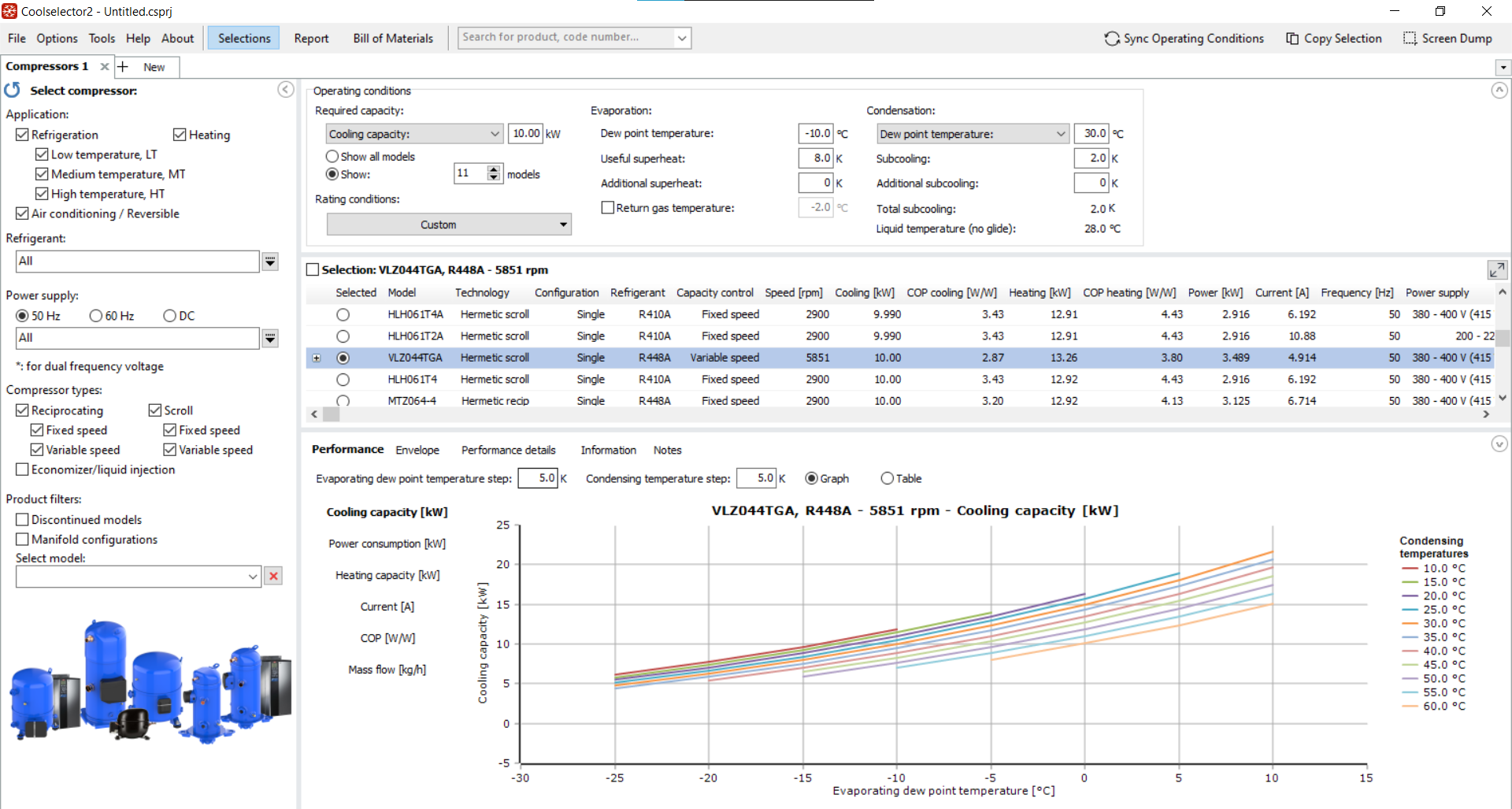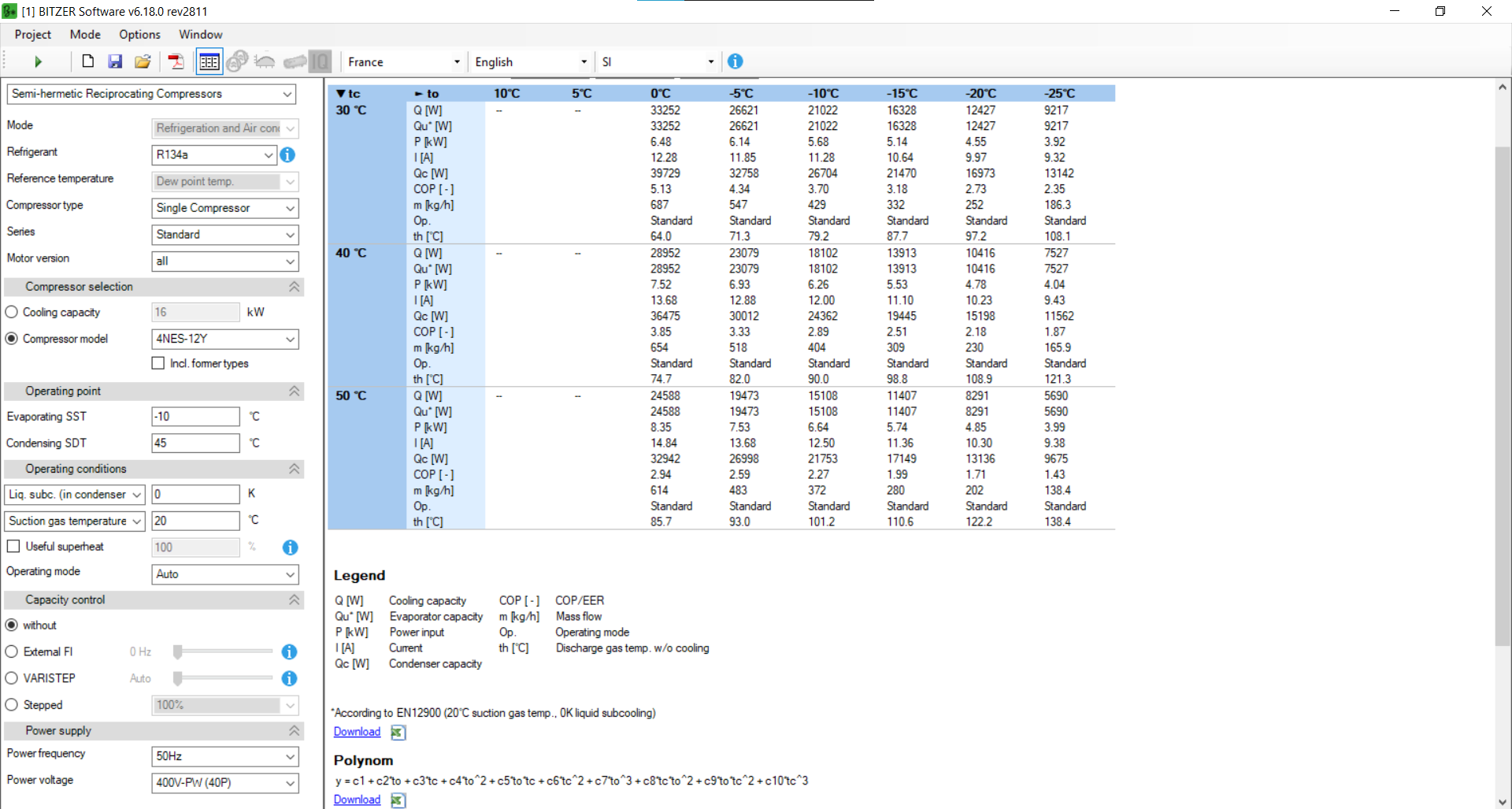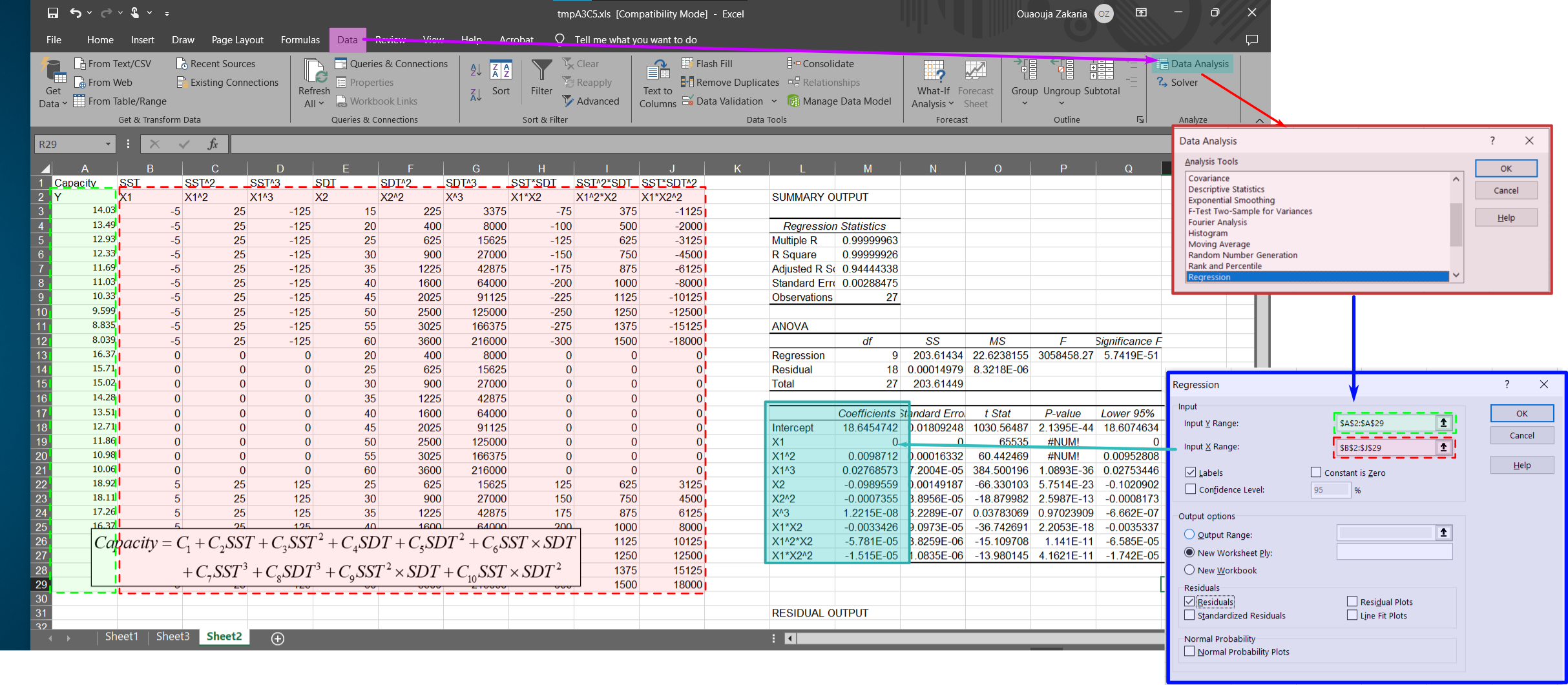Compressor Performance Curves [closed]
Hi everyone, How can I generate the coefficients for compressor performance curves (for a refrigerated warehouse model)?
Is there a tool that inputs manufacturer data and outputs the curve coefficients? such as the CurveFitTool.xlsm but generates Bicubic curves, because the CurveFitTool has only Cubic, Quadratic, and Bi-quadratic options.
Thank you.










Clarifying: Refrigeration compressors (such as for a refrigerated warehouse) require curves which are very different. If you are thinking about curves for DX cooling coils, CurveFitTool should be great.
Yes that right, I want to generate compressors bi-cubic curves for a refrigerated warehouse model.
I may be able to assist. Please contact me at: jvdirkes2@protonmail.com for more discussion.
Do you know about the curve data set available in EnergyPlus? If not, look for RefrigerationCompressorCurves.idf in the DataSets folder.
Thank you for your comments. Yes, I have been using the RefrigerationCompressorCurves.idf file, I want to know how the process is done to generate such curves so I can explain it if anyone asks.